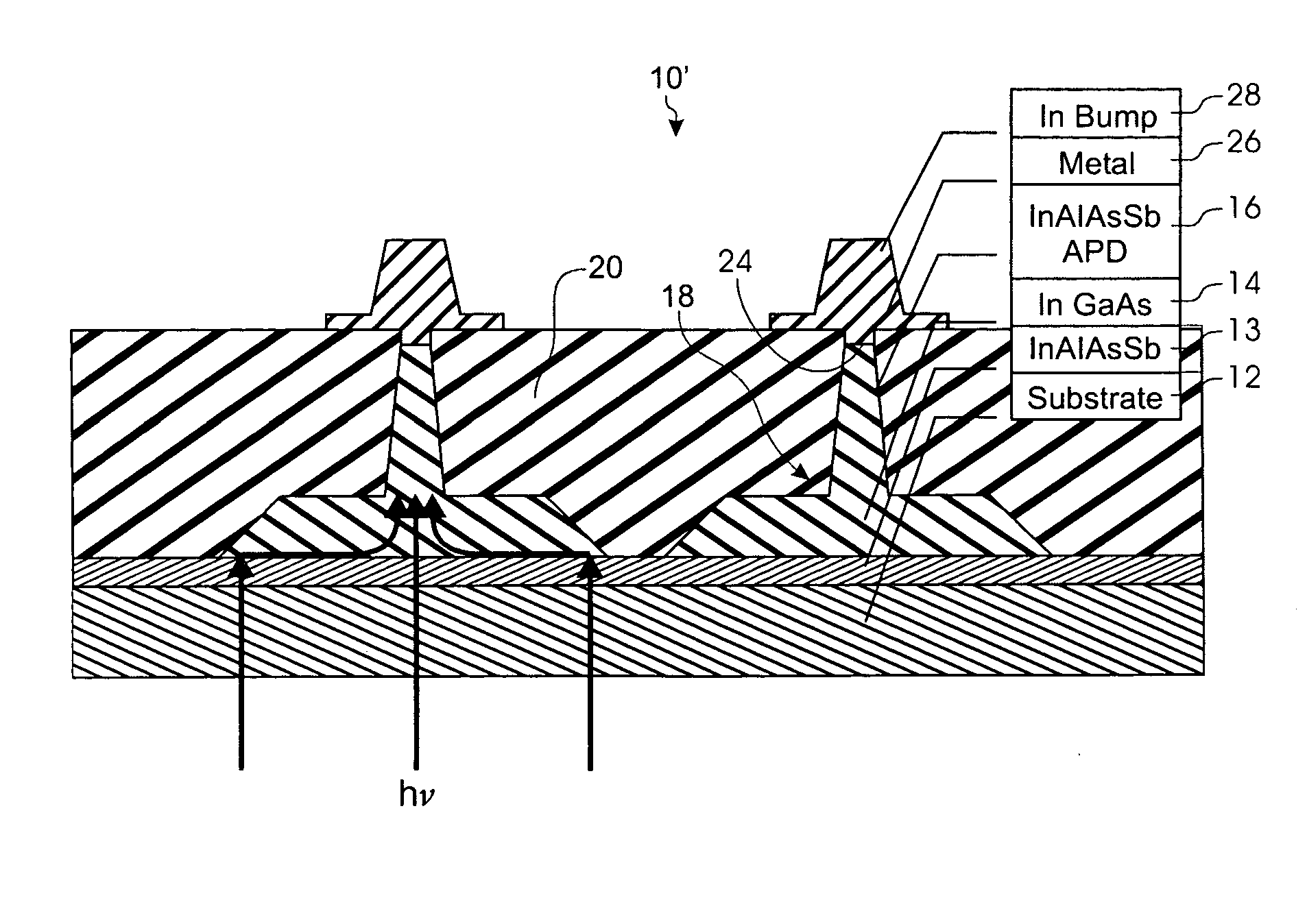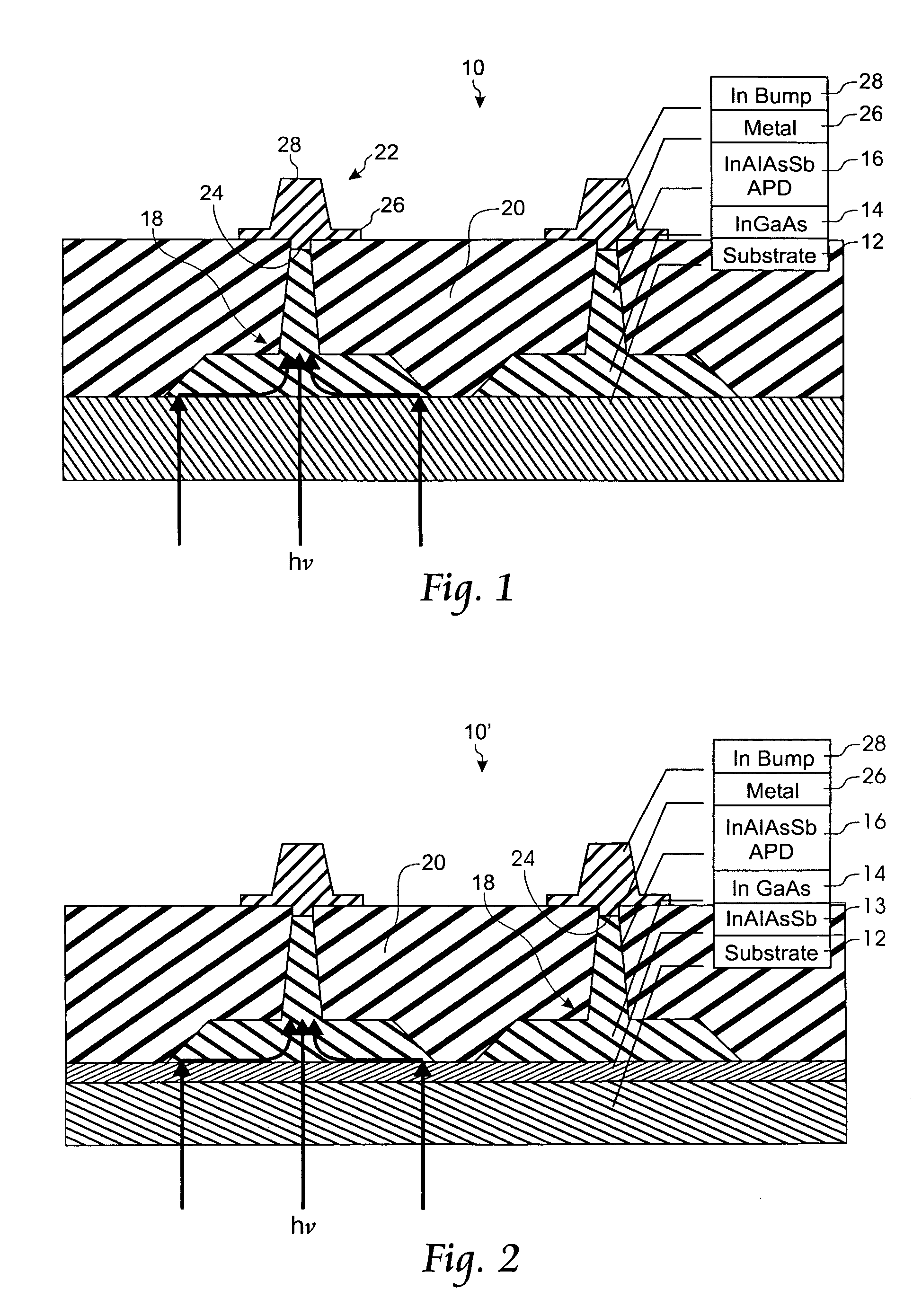Low dark current photodiode for imaging
a photodiode and low-dark current technology, applied in the field of photodetectors, can solve the problems of overall noise floor, too much capacitance per unit optical area to be used in room temperature photon counting imagers, and too much dark current generation in current apds, so as to reduce junction area
- Summary
- Abstract
- Description
- Claims
- Application Information
AI Technical Summary
Benefits of technology
Problems solved by technology
Method used
Image
Examples
Embodiment Construction
[0015] With reference now to the Figures, and in particular with reference to FIG. 1, a photodiode 10 is illustrated. The photodiode 10 has a base or substrate layer 12. The substrate layer 12 is made of material which is transparent to light waves. Thus, the substrate 12 is made from a material which will allow light waves to pass through the substrate 12. In accordance with one embodiment of the present invention, it is desirable that the substrate 12 allows short wave length infra-red light waves to pass through. A material such as Indium Phosphate (InP) may be used for the substrate 12. InP is widely used in photodetectors in lightwave communication systems because of its advantageous transport properties.
[0016] A second layer 14 is formed on the substrate 12. The second layer 14 is used to absorb the lightwaves of interest. Different materials may be used based on the desired wavelength of the lightwaves which are to be absorbed. In accordance with one embodiment of the presen...
PUM
 Login to View More
Login to View More Abstract
Description
Claims
Application Information
 Login to View More
Login to View More - R&D Engineer
- R&D Manager
- IP Professional
- Industry Leading Data Capabilities
- Powerful AI technology
- Patent DNA Extraction
Browse by: Latest US Patents, China's latest patents, Technical Efficacy Thesaurus, Application Domain, Technology Topic, Popular Technical Reports.
© 2024 PatSnap. All rights reserved.Legal|Privacy policy|Modern Slavery Act Transparency Statement|Sitemap|About US| Contact US: help@patsnap.com










